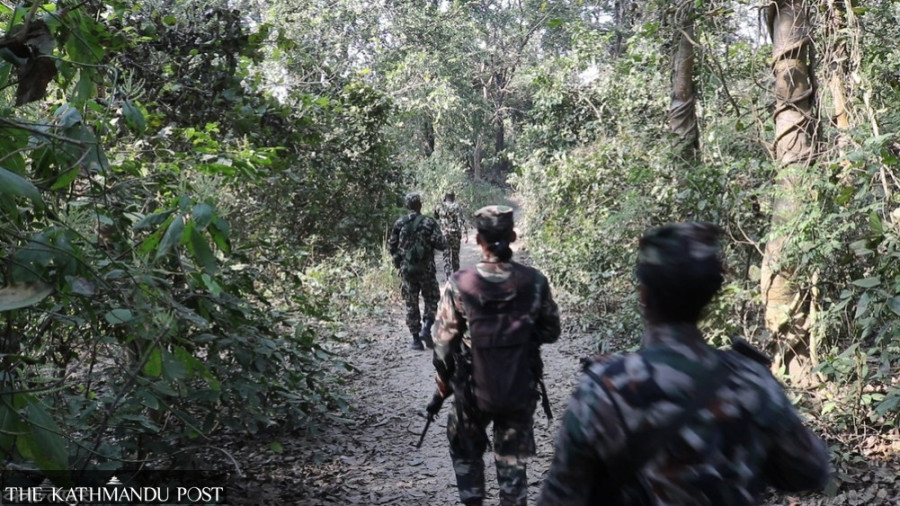National
38 wildlife traffickers who fled prisons last month still at large
Most of the fugitives were serving sentences for rhino poaching and trafficking of pangolin scales and other protected species.
Ramesh Kumar Paudel
At least 38 convicts imprisoned for wildlife-related crimes across Nepal remain on the run following the September 8–9 Gen Z uprising, when protests led to widespread prison breakouts across the country.
Although many inmates later surrendered or were recaptured following government directives, a significant number of those convicted for wildlife crimes are still missing. According to a report issued by the Department of Prison Management on October 16, three of the absconding convicts are Indian nationals.
Around 15,000 inmates fled several prisons in various parts of the country and nearly 5,000 of them are still on the run, according to the department.
Among the 38 convicts imprisoned for wildlife-related crimes who fled the prisons, 16 individuals were convicted in rhino poaching cases. Seven were serving sentences for pangolin scale smuggling, three for red panda trafficking, and two each for snow leopard and musk deer poaching. In addition, one convict each imprisoned for selling a live tortoise and trading leopard skins has also escaped.
The report further notes four others convicted under general wildlife crime provisions whose details have not been disclosed, as well as one more convict jailed for illegal trade of wildlife trophies and body parts.
The highest number of wildlife crime convicts escaped from Bharatpur Prison in Chitwan. Of the total, 12 were serving sentences for rhino poaching, four for pangolin trafficking, and two for snow leopard skin trading—a total of 18 fugitives from wildlife-related cases.
The Central Jail at Jagannathdewal in Kathmandu reported the second-highest number, with 15 convicts absconding. Among them were four rhino poachers, three pangolin traffickers, and two musk deer poachers. Two others were serving sentences for red panda and clouded leopard skin trafficking, respectively. One convict imprisoned for illegal trade of wildlife trophies and an Indian national convicted of selling a live tortoise also escaped during the chaos.
Similarly, two inmates, including one Indian national, fled from Nakkhu Prison, while another Indian fugitive escaped from Kailali Prison. Rautahat Prison reported the escape of one convict jailed for red panda trafficking, and Jhumka Prison recorded one fugitive serving time for a wildlife crime.
Officials warn that the escape of poachers and traffickers involved in the trade of one-horned rhinos, pangolins, and other endangered species could heighten the risk of renewed poaching and smuggling across protected areas.
According to Bed Kumar Dhakal, spokesperson and deputy director general at the Department of National Parks and Wildlife Conservation, the department is currently compiling detailed records of the escaped convicts. “Local units, national park administrations, district authorities, and police are all working on this. We are assessing the situation and developing plans at the department level,” Dhakal said.
He added that a meeting of the Wildlife Crime Control Bureau (WCCB)—a coordination body that includes representatives from the army, Nepal Police, Armed Police Force, and Customs Department—will soon be convened to address the issue. “The upcoming WCCB meeting will discuss strategies and make decisions to apprehend all fugitives,” Dhakal said.
The bureau is supposed to meet every three to four months, but the next session—now five months overdue—has yet to take place.
With dozens of convicted poachers still at large, conservationists and authorities fear that Nepal’s hard-won progress in wildlife protection could face new and serious setbacks.




 8.12°C Kathmandu
8.12°C Kathmandu1.jpg)













%20(1).jpg&w=300&height=200)

